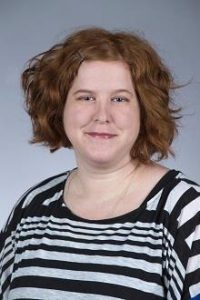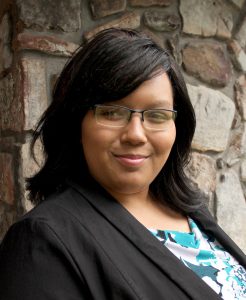by Meghan Turney
 Erin O’Malley currently works as the Art on Campus Outreach Coordinator at Iowa State University. Erin has a background in museum studies and fell into archiving, considering the two fields are so intertwined. Erin earned her BA …
Erin O’Malley currently works as the Art on Campus Outreach Coordinator at Iowa State University. Erin has a background in museum studies and fell into archiving, considering the two fields are so intertwined. Erin earned her BA …

Featuring profiles of outreach & advocacy in cultural heritage
by Meghan Turney
 Erin O’Malley currently works as the Art on Campus Outreach Coordinator at Iowa State University. Erin has a background in museum studies and fell into archiving, considering the two fields are so intertwined. Erin earned her BA …
Erin O’Malley currently works as the Art on Campus Outreach Coordinator at Iowa State University. Erin has a background in museum studies and fell into archiving, considering the two fields are so intertwined. Erin earned her BA …
by Michelle Slater
Lauren Goodley is a professional archivist with The Wittliff Collections at Texas State University. She has been in her current position for five years, and has taken on various projects, responsibilities, and collaborations; as her role continues …
by Thera Webb
I recently had the opportunity to speak with Lindsay Sprechman, the Collections Archivist for the Jewish Heritage Center at New England Historic Genealogical Society. Sprechman became interested in archives during college when she was an intern at …
by Sacha Mankins

The Mosaic Templars Cultural Center of Little Rock, Arkansas, celebrates the history and culture of Black Arkansans, with special emphasis on African-American fraternal organizations and black businesses. I recently spoke over the phone with the Cultural …
by Anna Faherty
The Science Museum of Minnesota, located in downtown St. Paul on the Mississippi River, has been an important institution since its founding in 1907. Learn more about the museum at its website: https://www.smm.org/. At the science …
by Anna Faherty
Lorna Condon, the Senior Curator of Library and Archives at Historic New England, was kind enough to meet with me this week and tell me about the collections and programs her institution offers. In her position of …
by Jessica Purkis
Recently, I had the chance to catch up with Bergis Jules, the University and Political Papers Archivist at the University of California, Riverside. Bergis manages UC Riverside’s institutional records, political papers collections, and African American collections. While …
by Gina Cullen
Meet Emily Drabinski, Coordinator of Library Instruction
Emily Drabinski, the Coordinator of Library Instruction at LIU Brooklyn, grapples with a lot of logistics every day. They may take the form of analyzing the metrics of library …
by Alden Ludlow
Myron Groover is the Archives and Rare Books Librarian at McMaster University, Hamilton, Ontario, Canada. He received his Master of Archival Studies and MLIS degree from University of British Columbia, Vancouver in 2012. He also holds a …